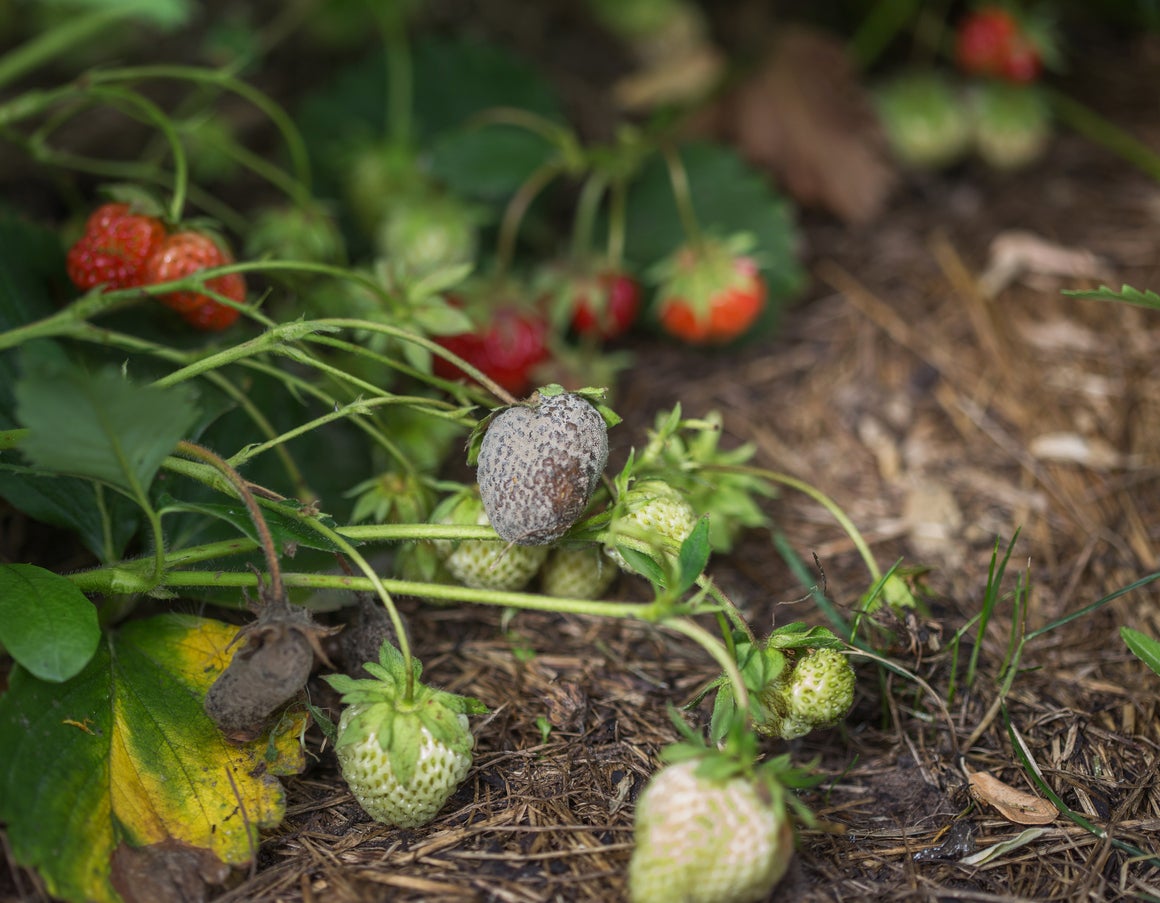
Gray mold on strawberries, otherwise referred to as botrytis rot of strawberry, is one of the most widespread and serious diseases for commercial strawberry growers. Because the disease can develop both in the field and during storage and transit, it can decimate a strawberry harvest. Controlling strawberry botrytis rot then is of primary importance, but unfortunately, it is one of the most difficult pathogens to control.
About Gray Mold on Strawberries
Botrytis rot of strawberry is a fungal disease caused by Botrytis cinerea, a fungus that afflicts a number of other plants, and is most severe during bloom time and at harvest, in particularly rainy seasons accompanied by cool temps.
Infections begin as small brown lesions, usually under the calyx. Spores on the lesions begin to grow within a day and appear as a gray velvety mold. The lesions grow rapidly in size and afflict both green and ripe berries.
Infected berries remain firm and yet covered with gray spores. High humidity favors the growth of the mold, which is visible as a white to gray cottony mass. On green fruits, lesions develop more slowly and the fruit becomes malformed and completely rotten. Rotten fruit may become mummified.
Strawberry Botrytis Rot Treatment
Botrytis overwinters on plant debris. In early spring, the mycelium becomes active and produces lots of spores on the surface of the plant detritus which is then spread by wind. When moisture is present and a temperature between 70-80 F. (20-27 C.), an infection can occur within a few hours. Infections occur both at bloom and as the fruit ripens but are often not detected until the fruit is mature.
Upon picking strawberries, infected fruit can rapidly, especially when bruised, spread the disease to healthy fruit. Within 48 hours of picking, healthy berries may become an infected, rotting mass. Because the fungus overwinters and because it can cause infection at all stages of development, controlling strawberry botrytis rot is a difficult task.
Control weeds around the berry patch. Clean and destroy any detritus before the plants begin to grow in the spring. Select a site with good soil drainage and air circulation with plants in full sun.
Sign up for the Gardening Know How newsletter today and receive a free copy of our e-book "How to Grow Delicious Tomatoes".
Plant strawberry plants in rows with the prevailing winds to promote more rapid drying of both foliage and fruit. Allow for adequate space between plants. Put a good layer of straw mulch between the rows or around the plants to reduce the occurrence of fruit rots.
Fertilize at the proper time. Too much nitrogen in the spring prior to harvest can produce excess foliage which shade forming berries and, in turn, keeps the berries from drying rapidly.
Pick fruit early in the day as soon as plants are dry. Remove any diseased berries and destroy them. Handle berries gently to avoid bruising and refrigerate harvested berries immediately.
Lastly, fungicides may be used to aid in the management of botrytis. They must be timed properly to be effective and are most effective in conjunction with the above cultural practices. Consult your local extension office for recommendations on the use of fungicides and always follow the manufacturer’s instructions.

Amy Grant has been gardening for 30 years and writing for 15. A professional chef and caterer, Amy's area of expertise is culinary gardening.
